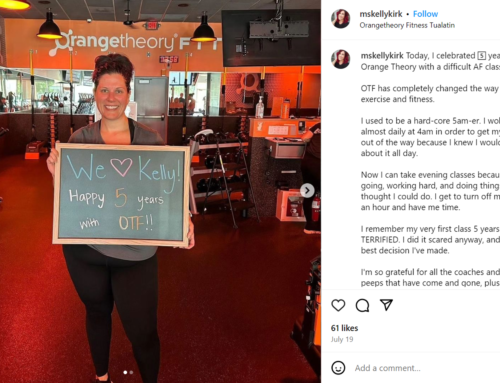Gwyneth Paltrow landed on Netflix on January 24. However, it was not to present anything like Shakespeare in Love, The Talented Mr. Ripley, or Iron Man. In her new docuseries The goop lab we can see her in her most magnificent role. Yes, the great platform for online series and movies has given her a space to sell California’s most posh pseudo-scientific therapies.
Of course, the medical advice and therapies are provoking great controversy. Is it dangerous to present pseudoscience in such a way to the public, making it seem glamorous and safe?
As Paltrow explains in the intro of The Goop Lab, in 2008 she discovered that her vocation went beyond “Making out with Matt Damon on screen”. The new project that gave meaning to her life was the blog Goop where she gave advice on lifestyle. Later, that portal became the perfect platform to sell certain products: the most famous of them, the candle that smells like her vagina that sold out in a short time.
However, the list of useless and extravagant gadgets that the actress has placed on people around the world is long. The actress has received a cascade of criticism from scientists and even a fine for misleading advertising for selling jade and pink quartz eggs that supposedly regulated menstruation by placing them in the vagina. However, this long journey through the pseudosciences has ended with a prize: a brand valued at $250 million, according to The New York Times, and its own program.
When Netflix announced the arrival of Paltrow’s documentary on the platform, a large number of netizens expressed their disapproval via Twitter. In fact, many users threatened the company with unsubscribing if the content eventually was put up. I
The show is available from the end of January available on the Netflix platform for consumption and enjoyment of all its customers. In its six episodes you can see moments as shocking as a woman masturbating and having an orgasm in front of the camera, several people getting high off hallucinogenic mushrooms and even Gwyneth Paltrow putting blood on her face.
A dangerous message?
Anyway, it’s important not to get carried away by the show. Messages in this program are potentially dangerous, according to the director of The British National Health System (NHS). To try to avoid these criticisms, The Goop Lab claims that: “This series is intended to entertain and report, not to give medical advice. Always consult with your doctor about your health or before starting any treatment.”
Despite this, Paltrow invites doctors, researchers, and patients who endorse health practices and therapies for which there is still no consensus among scientists to sit with her. I mean, everything is orchestrated to give it packing and a touch of glamour. She and her team are handsome, rich, thin, athletic and unafraid to talk about their emotions. How can the practices they perform and yet seem so healthy be so bad?
Drug therapy
The documentary series begins high: its first episode is about controversial psychedelic psychotherapies. A current of mental health treatment that uses drugs such as MDMA and hallucinogenic mushrooms. “It is true that the therapeutic possibilities of these drugs are being investigated. They’ve been talking about them for a long time, but they’re still not allowed to be used because a lot of things aren’t allowed,” Baos explains.
That is, there is no consensus as to the dosages to be given, nor is its balance between benefits and risks clear. In fact, in order to take these drugs, Paltrow’s team must go all the way to Jamaica to do so legally. However, the program exposes patients who argue that the method is effective: among them, a military man with post-traumatic stress and a woman who experienced episodes of anxiety when she was diagnosed with cancer.
Who does Paltrow send to try this therapy? Four of your employees. Two of them want to live the experience to connect with themselves and be more creative and the other two, to overcome personal traumas: the death of their father, in the case of one, and the inability to create intimate social relationships, in the other’s. “You have the idea that they are friends who have decided to take a trip simply to take drugs. They have distressing hallucinatory experiences and end up bleaching them. One even says it’s been the best experience of his life,” Baos says.
Ice water for stress
The second chapter deals with the case of Wim Hof, a man who argues that he has achieved an especially strong immune system through three procedures: the first, performing breathing techniques, the second, gradually diving into very cold water and, the third, to be mentalized. According to him, this method serves to deal with stress, panic attacks and even illness. This chapter shows a patient with an autoimmune disease who had a 50% chance of becoming paralyzed. He argues that the Wim Hof method is what allows him to remain asymptomatic.
This BBC article explains that exposing yourself to the cold “creates panic and triggers adrenaline levels […] That can make the body support the cold, but only temporarily. […] Breathing deeply changes the acidity of the body and makes it more alkaline. That can contribute to pain reduction, but again, very briefly.” In this sense, Baos explains that it is dangerous to make us think that breathing we will be able to control the cold: “Hypothermia exists”, ” he says for every response. Hof’s healing treatments include practicing snowga, i.e. doing yoga in snowbathing.
The Eternal Diet
In the fourth chapter we discover that we are all two ages: a chronological one—the number of candles we blow each birthday—and the one that our bodies actually have and can predict our risk of mortality. While biological age advances mercilessly, The goop lab ensures that we can do something to stop biological aging: a diet.
A friend of Paltrow’s becomes vegan and another flexitarian for three weeks, and the actress will diet with fewer calories daily from the necessary and with food in sachets that reconstitute with water. In the end, Gwyneth Paltrow has rejuvenated the most of the group. “There are several errors,” explains Beatriz Robles. “It is true that vegetarian, vegan and flexitarian diets are compatible with a healthy state of the body, but it channels them by treating them as detoxification processes and, of course, does not serve as anti-ageing measures.”
These diets, rather than rejuvenating, reduce the risk of heart disease and cancer for a reason: they dispense with red and processed meat, considered carcinogenic by the World Health Organization (WHO) in 2015. Another problem is how fasting and purification are spoken through diets, the latter are completely unnecessary in the existence in the body natural mechanisms to expel toxins. “There is still no consensus in the reference institutions in Nutrition to recommend at a general level to fast. It doesn’t work for everyone, and if it’s to be done, each person should receive an individualized plan from a doctor.”
The Pseudoscience
The last two chapters of The Goop lab are perhaps the most pseudoscientific. They are based on energies: the fifth on how to heal the body without touching it and, the sixth, on how we can all become mediums. Needless to say, the existence of these energies is unproven and that it is more of a subject of faith than a scientific one.
The third, however, is probably the most successful chapter in the series. She talks about achieving female orgasm through women’s empowerment and reinforcing her self-esteem to feel less judged at the time of sex. However, the chapter does not renounce the show by showing a woman masturbating on the advice of a guide.
“The program represents a typical problem: a celebrity as a health advisor. It is a powerful image that is difficult to fight against. It has a real perverse attraction that makes products look glamorous,” Robles warns. “It’s a program that basically says, ‘This works for me.’ That is, the typical phrase of a pseudoscience salesman,” Baos concludes.




